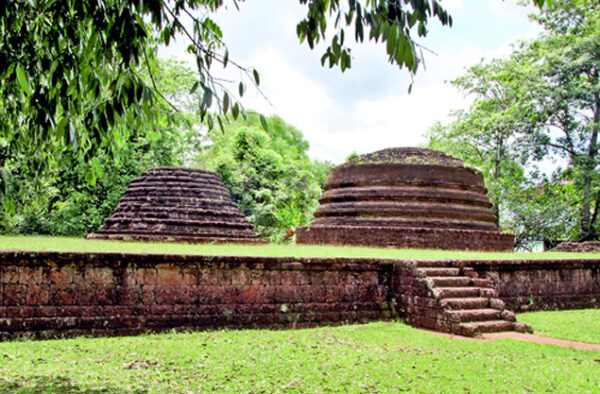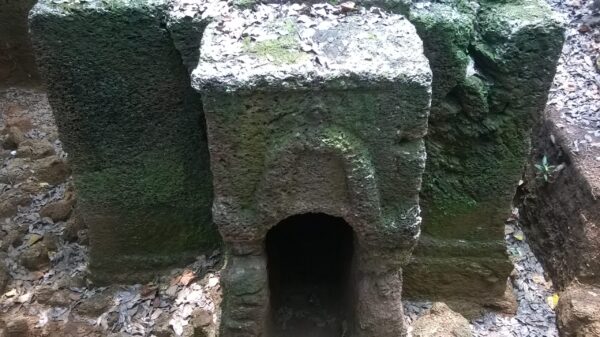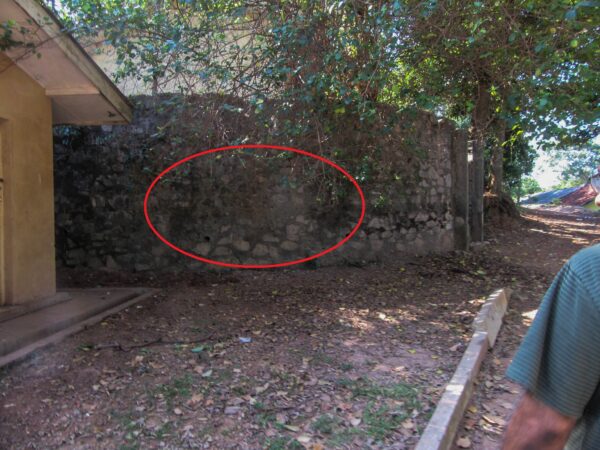Tunneled history of Kotte Kingdom
By Arundathie Abeysinghe

 Secret passageways were a common characteristic of ancient Sri Lankan Royal architecture which served as pathways to escape from a kingdom during an enemy invasion. There had been numerous such passageways used by Royalty centuries ago in different parts of Sri Lanka…
Secret passageways were a common characteristic of ancient Sri Lankan Royal architecture which served as pathways to escape from a kingdom during an enemy invasion. There had been numerous such passageways used by Royalty centuries ago in different parts of Sri Lanka…
The Archaeological Department recently commenced excavations of the ancient tunnel situated at Kotte Ananda Sastralaya (a public boys school located in *Kotte, Sri Lanka), a project sponsored by the Municipal Council of Kotte. Yet, this secret tunnel is not properly preserved.
According to scholars, Kotte tunnel has had several exits with one exit at the present Kotte Raja Maha Viharaya, a temple built by King Parakramabahu VI during his reign (1415-1467) situated in close proximity to his palace. Kotte Raja Maha Viharaya has been a significant temple among the historical places in the ancient Kingdom of Kotte and has had royal patronage and had been the main religious center during the 15th century.
According to scholars, the majority of archaeological remains of Kotte were lost during the last century.
There had been three such tunnels that had been utilized as secret passageways in the ancient Kingdom of Kotte. Yet, the ruins of only one tunnel are left, due to destruction caused by invasions of foreign troops. These old tunnels had been created by Nissanka Alakeshwara, the founder of Kotte. When the Kingdom of Kotte was the capital of Sri Lanka, this tunnel had been extended from the inner city towards the outer fort to exit from the Royal Palace to Pita Kotte.
This tunnel has been constructed with Kabok stone (laterite stones) and there are traces of decoration at the entrance/exit points. Closer observation reveals that it can be a lion-head design or a dragon pandal (fabricated structure, temporary or permanent).
During the era of the Kingdom of Kotte, there had been an entrance to a tunnel that had connected Etul Kotte to Pita Kotte. According to scholars, the Tunnel had led to Ananda Sastralaya. There had been two ambalamas (simple structure constructed to provide shelter for pilgrims, traders as well as travelers to rest) one of which is still there and had been reconstructed on the same location and had been later transformed into a bus stand. There are two stupas at Veherakanda, referred to as “kotaveheras”. Except a few artefacts, there is little evidence that Kotte had been a Kingdom and the center of political life in former Sri Lanka.
There are partial views of a lion-head gateway. Although the site is of great significance archeologically and historically, the site of the tunnel is unkempt and overgrown with weeds.

According to legends, the tunnels had been constructed by Princess Suriya Devi, the queen consort of Prince Veediya Bandara (commander-in-chief of the Kingdom of Kotte during the reign of King Bhuwanekabahu VII of Kotte (1468 – 1550) and the daughter of King Mayadunne (1501–1581) of *Sitawaka Kingdom to free her husband from the dungeons of Portuguese located inside Colombo Fort.
As described in *Nikaya Sangrahaya and *Saddharmaratnakaraya, Nissanka Alakeshvara had constructed the fortress of Kotte based on the defence system planned and constructed by Pandit Mahaushada (a *bodhisattva, considered as a previous birth of the Buddha).
In 2014, during excavations in the school premises unraveled a kabok (laterite stones) chamber cut in with a stupa in the middle. The size of the chamber is approximately 18 X 35 feet (approximately 5 X 10 meters) in dimensions. There are also traces of steps as well as an impressive moonstone below the steps. Yet, the chamber floor is over 10 feet (approximately 3 meters) under the ground level. There are partial views of a lion-head gateway. Although the site is of great significance archeologically and historically, the site of the tunnel is unkempt and overgrown with weeds.
According to former Director General of Archaeology, Dr. Senarath Dissanayake, the Department of Archeology is underfunded. Hence, conservation is difficult. “We have a limited amount of money to carry out projects. In addition, most of the monuments are on privately owned lands. So, we cannot excavate those locations”.
Image courtesy – archaeology.lk & owlmuses.com
- Bodhisattva – In Buddhism, a bodhisattva (Sanskrit), bodhisatta (Pali) is an individual on the path towards Buddhahood. In the Early Buddhist schools as well as *Theravada Buddhism, a bodhisattva refers to a person who has made a resolution to become a Buddha and received a confirmation or prediction from a living Buddha.
- Kingdom of Sitawaka – A kingdom located in south-central Sri Lanka that emerged from the division of the Kingdom of Kotte. Kingdom of Sitawaka had offered fierce resistance to the Portuguese who arrived in Sri Lanka in 1505.
- Kotte – Sri Jayawardenepura Kotte, commonly known as Kotte is the legislative and administrative capital of Sri Lanka.

- Nikaya Sangrahaya – The Sinhala text of the “Nikāya Saṅgrahaya” was first edited and published by Mr. D. M. de Z. Wickremasinghe in 1890. A 14th century Sinhala language literary text written by Mahasami (Head of the Saṅgha) Ven. Dharmarakṣita Thero also known as Ven. Jayabahu. The text traces the manner in which Buddhism was passed down and protected from generation to generation in India and Sri Lanka as well as how the orthodox *Theravada (Buddhism) eventually gained superiority in Sri Lanka.
- Saddharmarathnakaraya – Saddhammarathnákara in Pali is a historical Sinhala Buddhist religious text compendium compiled as an explanation to a Pali anthology during the era of King Parakramabahu VI of the Kingdom of Kotte in the 15th century.
- Theravada Buddhism – A conservative form of Buddhism than Mahayana Buddhism (developed from Hinayana Buddhism, Sanskrit term meaning “small vehicle”, a term given by followers of Mahayana Buddhism to conservative school of early Buddhism, Theravada Buddhism). Theravada Buddhism is practiced in Sri Lanka, Myanmar (former Burma), Thailand, Cambodia and Laos.







